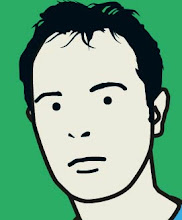

Amazingly, for an area that was so heavily bombed during the last war, there are still so many beautiful old buildings in Hackney. Sure, there's streets of robust Victorian terrace houses that spool off from Lower Clapton Road, Mare Street and Graham Road. But along with the Art Deco Strand Building, the German Hospital on Ritson Road offers something far more intriguing than your conventional residential housing.
When I was hunting for a new home at the end of 2006, I looked at a one bedroom flat in the Hospital. The corridors still very much look like hospital corridors, which makes walking down them a rather strange experience -- you keep expecting to see doctors and nurses running hither and yon, racing to some emergency, a look of focussed intent on their faces. It may be a false memory, but I swear the hallways still had that antiseptic, hospital smell. The flat I looked at was, sadly, something of a disappointment -- it was pretty cramped, the bed on a mezzanine level, the whole place barely big enough to swing a mouse, let alone anything larger.
But I suppose it was pretty unlikely that anything inside was going to live up to the incredible Tudor Gothic facade. The building dates from the mid-1800s. There were around 30,000 Germans living in London by then, the capital's largest immigrant community. At the suggestion of the Prussian Ambassador, Christian Karl Josias, baron von Bunsen, a hospital was opened in 1845, with 12 beds, on the site of the Dalston Infant Orphans Asylum, "to all who spoke the German tongue, without distinction as to religion and origin, from Switzerland to the banks of the Rhine and from the banks of the Rhine again to the Baltic and the North Sea."
Florence Nightingale visited the Hospital in June, 1846, and was so impressed by the example of the Protestant nursing staff, shipped in from the Kaiserwerth Institute near Dusseldorf, that she enrolled for a three month training course there in June, 1851. In the first year, 10,000 patients came through the Hospital doors, so the site was developed [pic 1], in 1864, by Thomas Leverton Donaldson, the inaugural Professor of Architecture at UCL. In the meantime, Nightingale had witnessed the appallingly high number of fatalities while stationed at Scutari during the Crimean War, and recommended that the Hospital deploy a pavilion plan to increase ventilation to reduce the mortality rate.
In 1936, the Hospital's Bauhaus-style East Wing [pic 2] was built in Fassett Square, designed by Burnet Tait & Lorne, riffing on Alvar Aalto's Paimio Sanitarium in Finland. It was intended to house maternity and children's wards, the roof gardens apparently something to behold, views stretching as far as Crystal Palace. A random fact for you: the BBC shot the pilot for EastEnders in Fassett Square.
Anyway, what's interesting to me is the story of the Hospital, particularly how the staff were treated by the English during the two World Wars. It seems that during the Great War, the younger doctors returned to Germany while the older ones stayed on. At the risk of sounding trite, it clearly must have been a brave decision to make; to stay in the country against whom you're currently fighting a war in order to help your compatriots, particularly with the entire staff branded as "spies". World War II, though, found the staff interned on the Isle of Man, their places taken by British doctors and nurses. In 1948, the Hospital was taken over by the NHS to treat psychiatric and geriatric patients, then closed in 1987, finally redeveloped as flats. It held 95 beds by the time it shut.
According to Foxtons website, you can currently expect to pay £535,000 for a "sumptuous, two bedroomed, lower ground floor flat that offers modern, well-presented living space" in what was once the German Hospital, now a Grade 2 listed building. On a previous blog, I mentioned how the East End is a palimpsest of its past, that spaces are shuffled, remade and remodelled, but shadows and ghosts remain. It's an observation, I suspect, I'll come to more than once here. But I wonder, think about what once went on inside this extraordinary building, how the medical staff coped as cholera epidemics decimated great swathes of London's population in the 1860s and 70s, the Thames, according to Disraeli "a Stygian pool reeking with ineffable and unbearable horror", swarming with stink and disease, the noxious horror of London at its peak. There is no God, or God is a devil. What suffering was witnessed in that "sumptuous two bedroomed lower ground floor flat"?


2 comments:
http://thechillout.blogspot.com/ have a look!!
I had a friend who was a patient at The German Hospital in the early 1980s. He suffered from schizophrenia which manifested itself in religious mania. He tried to prove his faith in the Lord and jumped to his death. In those days Hackney was a fairly run-down place and there were no gentrified residential developments.
Post a Comment